It looks like you're using an Ad Blocker.
Please white-list or disable AboveTopSecret.com in your ad-blocking tool.
Thank you.
Some features of ATS will be disabled while you continue to use an ad-blocker.
share:
I was watching a documentary last night on Iron age bog bodies and they mentioned this amazing piece of Iron age silver work known as The Gundestrup
cauldron , it was discovered in a peat bog near Gundestrup Denmark in 1891 and is believed to date back to the 1st or 2nd century BC .
The cauldron is made up of 12 plates and a base, five of the plates are long and rectangular and seven short ones with each of the plates decorated with fine reliefs of animals and Pagan Gods .
I ran a search for the Gundestrup cauldron and it came back blank so it may be as new to some of you as it is to me .
The Gundestrup cauldron
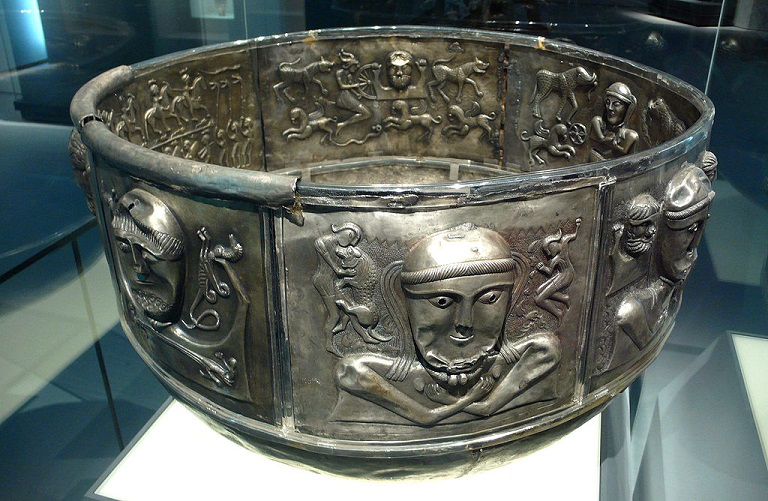
Here's a video of the Cauldron which gives an impression of its size and an up close view of the reliefs to show the beauty and detailing .
Gundestrup antlered figure with fine detailing and animals .

Interior panels showing some finely detailed reliefs .
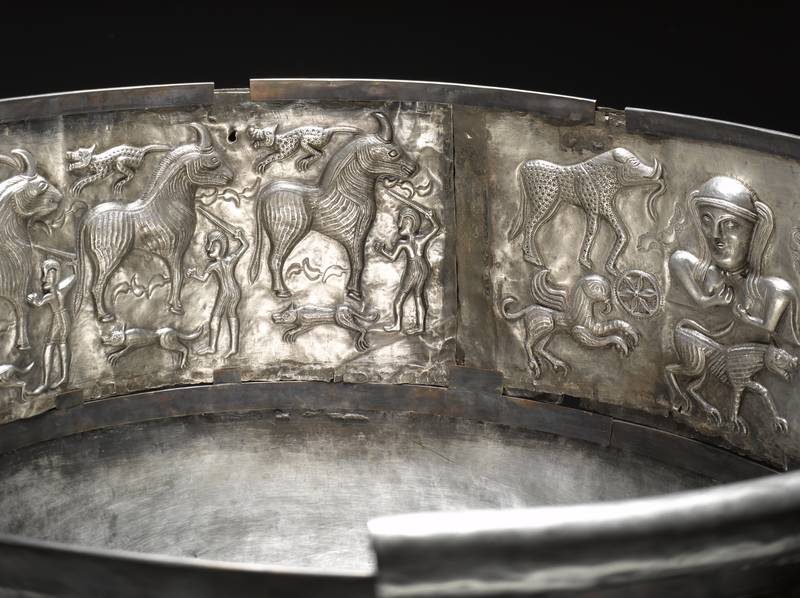
Image of what I assume is a Deity .
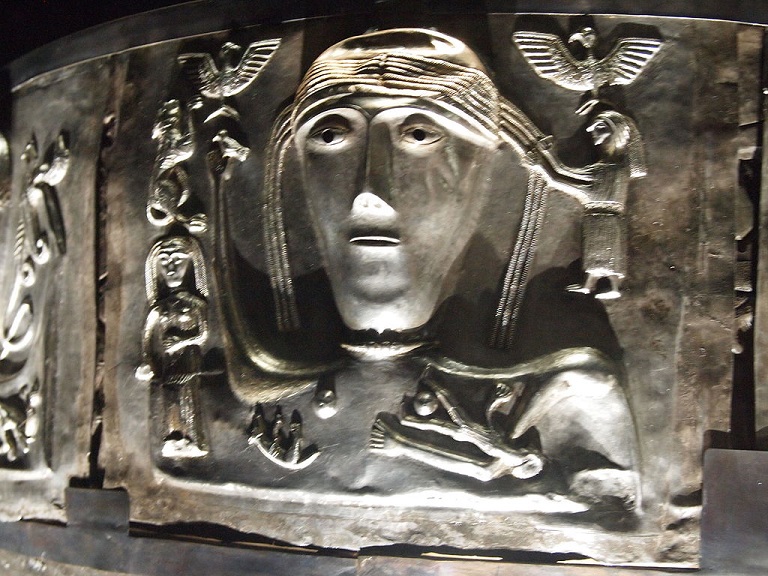
I say it every time I make one of these threads but Wow , the quality of workmanship and the state of preservation are amazing .
For more on the Gundestrup Cauldron's history and theories on its origin check out the links bellow .
Gundestrup Cauldron
en.wikipedia.org...
The cauldron is made up of 12 plates and a base, five of the plates are long and rectangular and seven short ones with each of the plates decorated with fine reliefs of animals and Pagan Gods .
I ran a search for the Gundestrup cauldron and it came back blank so it may be as new to some of you as it is to me .
The Gundestrup cauldron

The Gundestrup Cauldron is a religious vessel found in Himmerland, Denmark, 1891. It was deposited in a dry section of a peat bog, dismantled with its five long rectangular plates, seven short ones and one round plate. Each plate is made of 97.0% pure silver and filled with various motifs of animals, plants and pagan deities. Sophius Müller(1892) reconstructed these plates into the present form of the cauldron: five rectangular plates are placed in the inside of the cauldron leaving 2cm of space between each, and the seven (originally eight) plates form the outside of the cauldron. The round plate is assumed as the base of the cauldron. The reconstructed cauldron with its spherical base and cylindrical side is 69cm. in diameter and 42cm. high; both the inner and outer plates are almost of the same height ( about 21cm) forming the cylindrical side of the cauldron.
Here's a video of the Cauldron which gives an impression of its size and an up close view of the reliefs to show the beauty and detailing .
Gundestrup antlered figure with fine detailing and animals .

Interior panels showing some finely detailed reliefs .

Image of what I assume is a Deity .

I say it every time I make one of these threads but Wow , the quality of workmanship and the state of preservation are amazing .
For more on the Gundestrup Cauldron's history and theories on its origin check out the links bellow .
Gundestrup Cauldron
en.wikipedia.org...
edit on 4-12-2013 by gortex because: (no reason given)
Wow, what an amazing find...Never heard of that one.
Thanks for bringing it to our attention.
Makes you wonder how many treasures still lay buried in them there hills...
Thanks for bringing it to our attention.
Makes you wonder how many treasures still lay buried in them there hills...
edit on 4-12-2013 by Mythkiller because: (no reason given)
reply to post by gortex
Wow gortex,
How weird. It reminds me of that amulet thread from SLAYER69 in the sense that there is a lot more going on with that cauldron than meets the eye.
Taken at face value the thing becomes a bit of a conundrum because if it is from Denmark, then why are the motifs so obviously from "elsewhere"?
Then you find out the thing is from "Bulgaria", but it wasn't made by Bulgarians, it was likely made by the Thracians that lived in what is now known as Bulgaria; apparently the silverwork is a dead ringer for just the type they were famous for. Problem is, that doesn't explain why some of the motifs, and armour on the figures in the motifs, are Celtic (!). That antlered guy is the Celtic deity, Cernunnos
Anyhow, it reminds me of those amulets because, like the guy in the video says, the cauldron is very well travelled and seems to have been deposited in its final resting place at a time of some kind of socio-religious upheaval.
I went to look at a map, and it's mind-boggling. The thing is created in some far western reach of the Thracian empire where it gets decorated with Celtic gods and Celtic soldiers (the helmets give it away, apparently), and then at some point possibly hundreds of years after it is made, it is transported way up North and deposited in a peat bog.
Somehow I am leaning towards the possibility that the guy in the video suggests, that it may have been a ritual object used in human sacrifice.
Really neat find, gortex. It really makes you wonder what everyone was up to way back then.
Wow gortex,
How weird. It reminds me of that amulet thread from SLAYER69 in the sense that there is a lot more going on with that cauldron than meets the eye.
Taken at face value the thing becomes a bit of a conundrum because if it is from Denmark, then why are the motifs so obviously from "elsewhere"?
Then you find out the thing is from "Bulgaria", but it wasn't made by Bulgarians, it was likely made by the Thracians that lived in what is now known as Bulgaria; apparently the silverwork is a dead ringer for just the type they were famous for. Problem is, that doesn't explain why some of the motifs, and armour on the figures in the motifs, are Celtic (!). That antlered guy is the Celtic deity, Cernunnos
Anyhow, it reminds me of those amulets because, like the guy in the video says, the cauldron is very well travelled and seems to have been deposited in its final resting place at a time of some kind of socio-religious upheaval.
I went to look at a map, and it's mind-boggling. The thing is created in some far western reach of the Thracian empire where it gets decorated with Celtic gods and Celtic soldiers (the helmets give it away, apparently), and then at some point possibly hundreds of years after it is made, it is transported way up North and deposited in a peat bog.
Somehow I am leaning towards the possibility that the guy in the video suggests, that it may have been a ritual object used in human sacrifice.
Really neat find, gortex. It really makes you wonder what everyone was up to way back then.
edit on 4-12-2013 by Bybyots because: . : .
reply to post by Bybyots
That's what I was thinking , the program I saw the Cauldron mentioned on ended up concluding that the bog bodies were those of kings who had failed their people somehow (failed harvest ect) and had been ritually murdered to appease the Gods .
The Cauldron has obviously travelled around a bit so it may have once been taken as loot and ended up being buried with its last owner , a king perhaps , the quality is very high status .
Edit
I changed the video for one of the real thing but here it is as a reference
Somehow I am leaning towards the possibility that the guy in the video suggests, that it may have been a ritual object used in human sacrifice.
That's what I was thinking , the program I saw the Cauldron mentioned on ended up concluding that the bog bodies were those of kings who had failed their people somehow (failed harvest ect) and had been ritually murdered to appease the Gods .
The Cauldron has obviously travelled around a bit so it may have once been taken as loot and ended up being buried with its last owner , a king perhaps , the quality is very high status .
Edit
I changed the video for one of the real thing but here it is as a reference
edit on 4-12-2013 by gortex because: edit to add
reply to post by gortex
Seriously,
It would take me another 20 years at the pace I am going to come up any kind of explanation for the thing that wouldn't sound like science fiction.
I found myself having to go back to try to understand the history of the horse in Britain so I could start to get a foothold and maybe understand it through the depictions of the soldiers and I just stopped. I have so much on my plate I just can't.
Where the darned heck is Super Mod Byrd, these days?
Left to my own devices and with the state of my current knowledge concerning antiquities being what it is; here is the story I am going with:
The cauldron belonged to Thulsa Doom, who was a renegade Scythian religious leader that subjugated the Hyperboreans, Thracians and all Celtic countries while his cult held the region in thrall. After Conan cut off his head and Doom's temple was destroyed, the cauldron was taken as far north as possible and dumped in a bog. But not by Conan, he just laughed.
And that's what I'm going with til Byrd shows up.
Seriously,
It would take me another 20 years at the pace I am going to come up any kind of explanation for the thing that wouldn't sound like science fiction.
I found myself having to go back to try to understand the history of the horse in Britain so I could start to get a foothold and maybe understand it through the depictions of the soldiers and I just stopped. I have so much on my plate I just can't.
Where the darned heck is Super Mod Byrd, these days?
Left to my own devices and with the state of my current knowledge concerning antiquities being what it is; here is the story I am going with:
The cauldron belonged to Thulsa Doom, who was a renegade Scythian religious leader that subjugated the Hyperboreans, Thracians and all Celtic countries while his cult held the region in thrall. After Conan cut off his head and Doom's temple was destroyed, the cauldron was taken as far north as possible and dumped in a bog. But not by Conan, he just laughed.
And that's what I'm going with til Byrd shows up.
edit on 4-12-2013 by Bybyots because: sorry
Are those Elephants?
I wonder what the other ones are supposed to be as well?

I wonder what the other ones are supposed to be as well?

reply to post by SLAYER69
I took them to be Elephants just a bit on the skinny side but then all the animals look a bit skinny or lean perhaps .
The ones at the bottom look a bit like Griffins to me but maybe a forebear of what we know as Griffins ?
Looking at them again I don't think they are Elephants , the tusks and ears look like Boar , I think they too are mythical creatures .... if in doubt it's ritual
I took them to be Elephants just a bit on the skinny side but then all the animals look a bit skinny or lean perhaps .
The ones at the bottom look a bit like Griffins to me but maybe a forebear of what we know as Griffins ?
Looking at them again I don't think they are Elephants , the tusks and ears look like Boar , I think they too are mythical creatures .... if in doubt it's ritual
edit on 4-12-2013 by gortex because: edit to add
reply to post by SLAYER69
Those are Griffins. You won't believe how far back the belief in them goes.
These are Scythian griffins eating a horse.
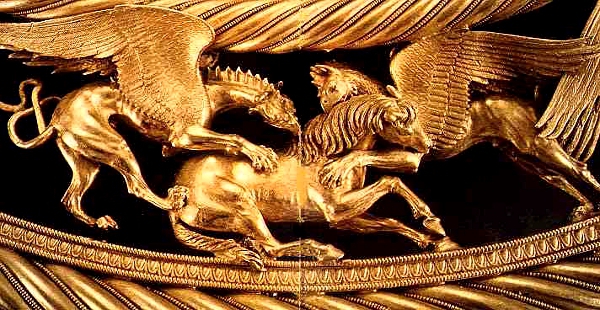
Interesting because the metalwork is from the same region as the cauldron.
Those are Griffins. You won't believe how far back the belief in them goes.
These are Scythian griffins eating a horse.

Interesting because the metalwork is from the same region as the cauldron.
reply to post by Bybyots
LOL I Googled Griffin right after I posted that reply and was on that same exact page.
LOL I Googled Griffin right after I posted that reply and was on that same exact page.
Bybyots
reply to post by gortex
Wow gortex,
Taken at face value the thing becomes a bit of a conundrum because if it is from Denmark, then why are the motifs so obviously from "elsewhere"?
edit on 4-12-2013 by Bybyots because: . : .
The Vikings were some of the greatest sea farers of their time...they made it as far China and North America, that is Fact, so why not be influenced by what they saw and brought back.
gortex
Gundestrup antlered figure with fine detailing and animals .
Is it my imagination or does he appear to be holding a double headed snake ring?
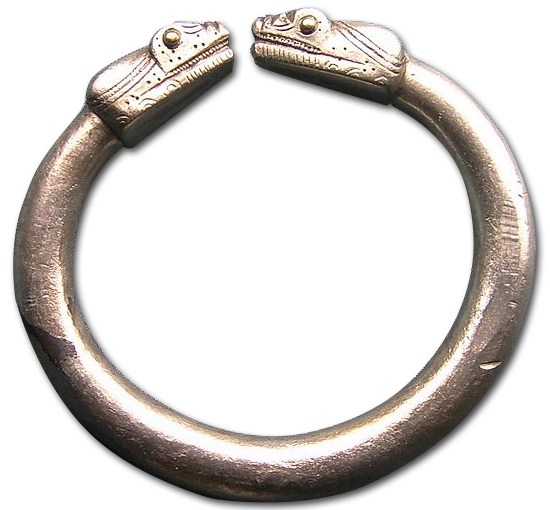
I've actually had the fortune to work with this piece and lay my hands on it. (Well, my gloved hands.) It's genuinely stunning, although there are
many equally beautiful artefacts from the pre-Roman European Iron Age.
reply to post by SLAYER69
We are all going in the same circles, all us folks that meet here to do this. I wonder very hard at that sometimes.
The Griffin thing gets really strange because there is this whole period of ancient history where people really believed in them and saw them regularly. It, at times, defies explanation. Check out this webpage, it seems they were a more prominent beast than dragons in the mind of the ancient world.
Huge Griffin Resource:
Did Griffins Really Exist?
We are all going in the same circles, all us folks that meet here to do this. I wonder very hard at that sometimes.
The Griffin thing gets really strange because there is this whole period of ancient history where people really believed in them and saw them regularly. It, at times, defies explanation. Check out this webpage, it seems they were a more prominent beast than dragons in the mind of the ancient world.
Huge Griffin Resource:
Did Griffins Really Exist?
reply to post by Bybyots
Thanks for the link. I also wonder about the horned animals in some of the other pics posted. it seems they believed in some creatures that never existed or did they? Reminds me of these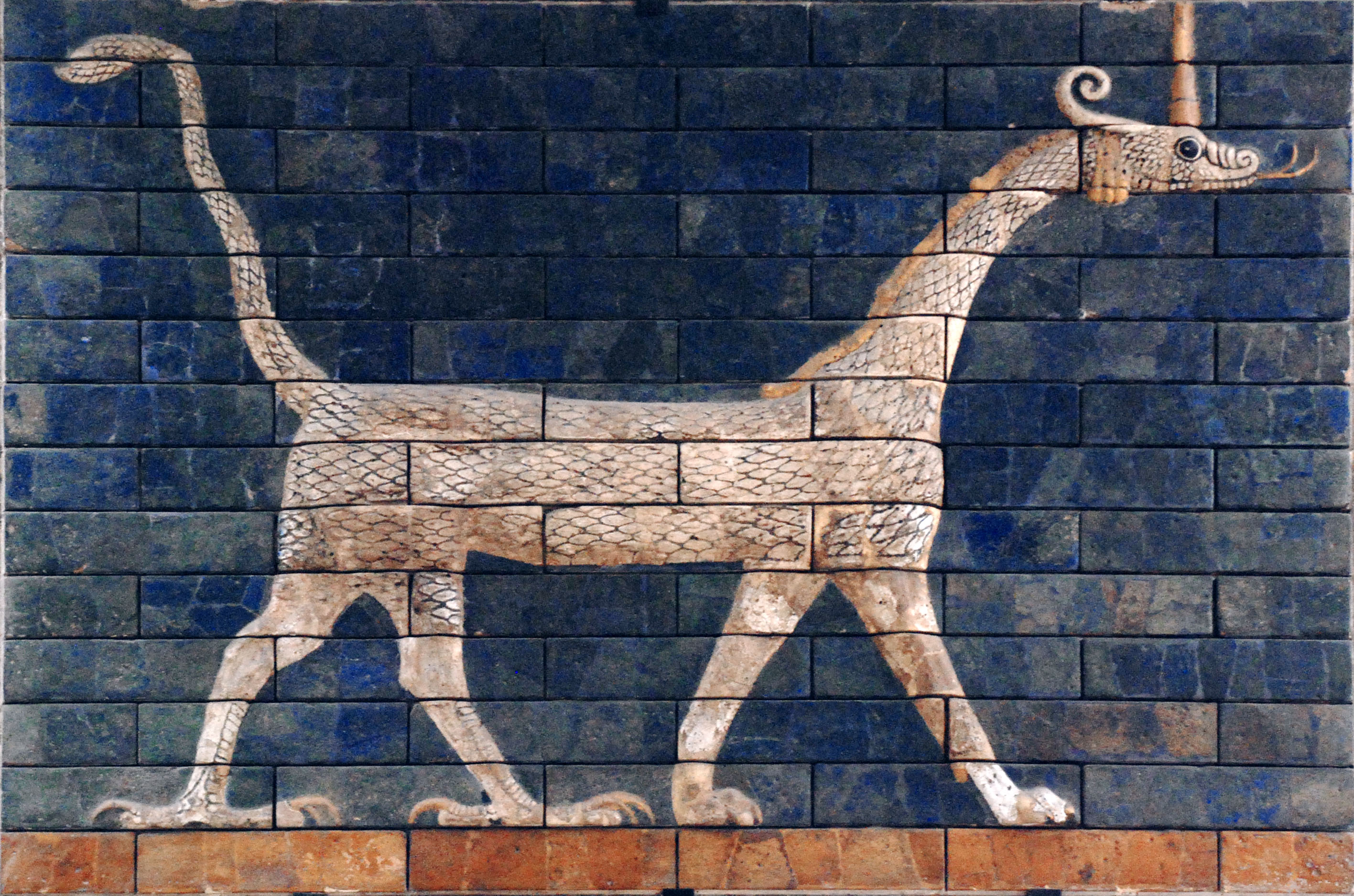
Thanks for the link. I also wonder about the horned animals in some of the other pics posted. it seems they believed in some creatures that never existed or did they? Reminds me of these

edit on 4-12-2013 by SLAYER69 because: (no reason given)
reply to post by gortex
Man, what I wouldn't do for that to be in my altar room. Having Cernunnos on the cauldron itself is seriously powerful but the rest of it just pushes it over the edge and beyond into awesome-land.
One of these days, I'm going to get a replica.
ps - in case you didn't notice, my avatar is the same as the one on the relief. The horned snake and torc are very important symbols for many versions of the horned god myths.
Man, what I wouldn't do for that to be in my altar room. Having Cernunnos on the cauldron itself is seriously powerful but the rest of it just pushes it over the edge and beyond into awesome-land.
One of these days, I'm going to get a replica.
ps - in case you didn't notice, my avatar is the same as the one on the relief. The horned snake and torc are very important symbols for many versions of the horned god myths.
edit on 4-12-2013 by Cuervo because: (no reason given)
SLAYER69
Are those Elephants?
I wonder what the other ones are supposed to be as well?
Looks like a pair of hippogryphs.
Hey,
Did you know the cauldron also has a base? I have been digging in to what i can on the thing and it's a really strange artifact. Anyhow, the base...

BRB
ETA: Heya, gortex. You know, that fellow in the video wasn't kidding when he said that the cauldron is controversial. For all anyone knows it may as well have been once used by Thulsa Doom after all. The thing is a really strange mash-up of much argued symbolism, generally agreed upon to be sort of proto-Celtic. There are elements such as the Torcs and the carnyxae carried by the soldiers, but it turns out that the griffins have no place at all in early Celtic anything so they are totally out of place.
The more I read about it the stranger it gets.
Did you know the cauldron also has a base? I have been digging in to what i can on the thing and it's a really strange artifact. Anyhow, the base...

BRB
ETA: Heya, gortex. You know, that fellow in the video wasn't kidding when he said that the cauldron is controversial. For all anyone knows it may as well have been once used by Thulsa Doom after all. The thing is a really strange mash-up of much argued symbolism, generally agreed upon to be sort of proto-Celtic. There are elements such as the Torcs and the carnyxae carried by the soldiers, but it turns out that the griffins have no place at all in early Celtic anything so they are totally out of place.
The more I read about it the stranger it gets.
edit on 5-12-2013 by Bybyots because: . : .
When looking at the picture of Cernunnus I can't help wondering if he is actually smoking a hookee pipe or is it a snake. Also I wondered if the
circle he is holding in his other hand is not the symbol for eternal life - which at this time in the morning I certainly can't spell.
I also seem to remember something from the Egyptian pictures where a coil of something is similarly being held. I know Cernunnus is often portrayed in a yogic pose and the 'dreaded' weed was widely held to enhance spiritual journeys, does anyone have any ideas as to what he is doing. I didn't think the serpent cults existed as far north and East as where the cauldron was eventually deposited, although I did read in the above it came for further South.
I also seem to remember something from the Egyptian pictures where a coil of something is similarly being held. I know Cernunnus is often portrayed in a yogic pose and the 'dreaded' weed was widely held to enhance spiritual journeys, does anyone have any ideas as to what he is doing. I didn't think the serpent cults existed as far north and East as where the cauldron was eventually deposited, although I did read in the above it came for further South.
new topics
-
BREAKING: Trump Judge Postpones Trial Date INDEFINITELY
US Political Madness: 9 minutes ago -
To all ATS members of Faith - Prayer request
Religion, Faith, And Theology: 3 hours ago -
Don’t Obstruct the Leftist Implosion
US Political Madness: 4 hours ago -
NASA Black Hole Visualization - Go Beyond the Brink
Space Exploration: 4 hours ago -
Russia police launch major manhunt after troops massacred by comrade in occupied Ukraine
Other Current Events: 7 hours ago -
Chinese scientists create new mutant Ebola strain with horror eye symptoms
Breaking Alternative News: 8 hours ago -
Maclemore - Hind's Hall (Pro-Palestine protest song)
Music: 8 hours ago -
Social Security projected to cut benefits in 2035 barring a fix
Global Meltdown: 10 hours ago -
Trump supporters training in the HILLS!!!!
US Political Madness: 11 hours ago -
Is the move to greenwashing solar and wind power set up for money laundering.
The Gray Area: 11 hours ago
top topics
-
Don’t Obstruct the Leftist Implosion
US Political Madness: 4 hours ago, 21 flags -
Trump supporters training in the HILLS!!!!
US Political Madness: 11 hours ago, 15 flags -
To all ATS members of Faith - Prayer request
Religion, Faith, And Theology: 3 hours ago, 12 flags -
Chinese scientists create new mutant Ebola strain with horror eye symptoms
Breaking Alternative News: 8 hours ago, 9 flags -
Black kids in the Bronx don't know what the word 'computer' is
People: 14 hours ago, 8 flags -
This is what it is all about
US Political Madness: 17 hours ago, 7 flags -
Russia police launch major manhunt after troops massacred by comrade in occupied Ukraine
Other Current Events: 7 hours ago, 6 flags -
Social Security projected to cut benefits in 2035 barring a fix
Global Meltdown: 10 hours ago, 5 flags -
NASA Black Hole Visualization - Go Beyond the Brink
Space Exploration: 4 hours ago, 4 flags -
BREAKING: Trump Judge Postpones Trial Date INDEFINITELY
US Political Madness: 9 minutes ago, 3 flags
active topics
-
BREAKING: Trump Judge Postpones Trial Date INDEFINITELY
US Political Madness • 0 • : CarlLaFong -
Israeli strikes on southern Gaza city of Rafah kill 22, mostly children, as US advances aid package
Middle East Issues • 168 • : NorthOS -
Candidate TRUMP Now Has Crazy Judge JUAN MERCHAN After Him - The Stormy Daniels Hush-Money Case.
Political Conspiracies • 1408 • : CarlLaFong -
Medvedev: “No one can hide, a global catastrophe is coming”
World War Three • 252 • : Plugit -
-@TH3WH17ERABB17- -Q- ---TIME TO SHOW THE WORLD--- -Part- --44--
Dissecting Disinformation • 860 • : angelchemuel -
Trump supporters training in the HILLS!!!!
US Political Madness • 60 • : matafuchs -
Don’t Obstruct the Leftist Implosion
US Political Madness • 15 • : lilzazz -
To all ATS members of Faith - Prayer request
Religion, Faith, And Theology • 18 • : CarlLaFong -
SC Jack Smith is Using Subterfuge Tricks with Donald Trumps Upcoming Documents Trial.
Dissecting Disinformation • 133 • : matafuchs -
Modern Mind Control
General Conspiracies • 53 • : nugget1
